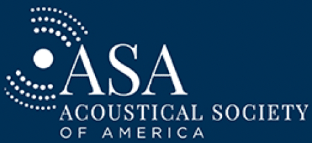- That Black Chemist
- Posts
- Earn Over $5,900 to Study the Science of Sound
Earn Over $5,900 to Study the Science of Sound
The Summer Undergraduate Research Program in Acoustics at the University of Mississippi is now accepting applications. Explore topics like sonar, noise control, and wave physics while earning a stipend, free housing, and professional mentorship.


What’s Happening Today!
Welcome to a new & exciting daily drop from That Black Chemist!
Today’s feature is an incredible Summer Undergraduate Research Program in Acoustics hosted by the University of Mississippi. You’ll be enabled to learn how sound travels underwater, how sonar works, or how engineers design concert halls in this fully-funded program. Students will explore cutting-edge topics in physics, engineering, and materials science with free housing, stipends, and mentorship from national acoustics researchers.
Next, NIST researchers recently used acoustic levitation to trap and study individual aerosol particles—some smaller than a red blood cell. These particles play huge roles in climate modeling, air pollution, and drug delivery, and this new technique could open a new frontier in how we study them, one-by-one.
Thanks for staying around for another awesome week of internship, scholarship, and research information from That Black Chemist!
Upcoming Opportunities

🔊 SURIEA Acoustics Summer Research in Acoustics
The Acoustical Society of America (ASA) invites undergraduates to apply for the 2025 SURIEA Program, an immersive, 12-week research experience in the science and technology of sound. Students will earn $5,900 to gain hands-on experience in acoustics, participate in a fundamentals short course in Chicago, and receive mentorship, networking, and professional development in one of STEM’s most fascinating interdisciplinary fields.
SURIEA is designed to support students from backgrounds historically underrepresented in acoustics or who have faced substantial barriers to STEM opportunities.
📅 Program Details:
Award: $5,900 stipend + up to $3,700 housing + $600 travel reimbursement
Duration: ~12 weeks (May – August 2026)
Location: Hybrid (Chicago in-person)
Eligibility: U.S. citizen undergraduates (2- or 4-year schools); 18+ years oldLink: [Register here]
⚠️ Bonus Opportunities You Should Know
🧪 NSF REU Summer Research Programs: List of funded undergrad research programs. (Search here)
🎓 Pathways to Science: List of paid internships and research opportunities for high school, undergraduate, and graduate students. (Search here)
💰 NASA OSTEM Internships: List of NASA Internships for high school and undergraduate STEM students (More info).
🧠 NASA Pathways Internship: Multi-semester internship involving different career paths at NASA (Link).
🌍 International Opportunities
🧲 Pathways to Science: List of upcoming internships, scholarships, and research programs hosted by the U.S. [open to international students]. (Search here)
🔬 Amgen Scholars Program: Prestigious summer research program for undergraduate students in the U.S., Europe, or Asia. (More info)
⚛️ European Organization for Nuclear Research (CERN): Search for any upcoming internships related to chemistry, physics, engineering, or data science! (Link here)
📤 Share This with a Friend in Need!
Like What You See? Subscribe for More Daily Content!
Scientist’s Scroll

🧪 NIST’s New Particle Standard Could Cut Costs and Improve Safety in Biologics
Protein-based drugs are revolutionizing treatment for cancer and autoimmune disorders but tiny impurities can trigger immune responses and cost manufacturers millions in discarded batches. Recently, a team at the National Institute of Standards and Technology (NIST) has released a breakthrough tool: SRM 1989, the first-ever reference material for visible protein-like particles in biologics.
Made using semiconductor-grade photolithography, these epoxy-based particles mimic the size, shape, and transparency of real protein aggregates. With three precisely sized standards, manufacturers can now standardize visual inspections, improve instrument calibration, and reduce batch failures.
By supporting both manual and automated quality control, this SRM boosts reliability across the entire drug production chain, helping ensure life-saving therapies are both safe and affordable.
Tip of the Day

🎓 Take Advantage of Loose Prerequisites
Some classes have “recommended” prerequisites instead of required ones but that doesn’t mean you should skip prep. These courses often attract curious, ambitious students from different majors, and that diversity can work for you. Here’s how to make the most of it:
Review the Basics Yourself: If a class recommends prior knowledge (like linear algebra or O-chem), do a quick refresher in the first week. A little self-study now prevents confusion later.
Play to Your Strengths: Coming from a different discipline? Use your unique perspective to ask questions others might miss or bring creative problem-solving into group projects.
Find Study Allies Early: Loosely gated classes attract a mix of skill levels. Team up with someone whose strengths complement yours and you’ll both benefit more than if you go it alone.
Use the Course to Build a Bridge: Want to break into a new field (e.g. bioinformatics or neuroscience)? These classes are the perfect way to cross over without needing an entire new major.
Subscribe to explore daily research opportunities!
Today’s Theme: Fact or Fiction Friday

Congratulations on making it through the work week! Ready to test your science savvy?
👇🏾 Vote if you think the statement below is fact or fiction and tell us why in the comments!
Statement: Digitization is how computers analyze data from analog measurements.
📩 Like this post? Share it with a friend!
🤔 Got a news article or tip to share? Reply and I might feature it!
💰 Donate to support my project: ko-fi.com/thatblackchemist
📅 Subscribe to ‘That Black Chemist’ for more daily posts!
Recommended Newsletters
Thanks for Reading to the End!
If you enjoyed this article, you’ll enjoy these newsletters too!
|
|
|
|




Reply